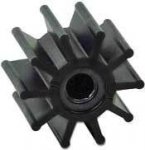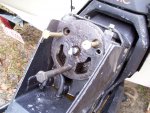They seem to be the same. Why is the short type impeller use for these two engines alone? Will it help my water flow problem? Thanks.
Howdy,
Well, the impeller for the (Cobra) 87-89 2.3L, 3.0L, 4.3L, 5.0L, 5.7L & 7.5L (and newer Dog-clutch) packages are ALL specified as part number 0983895 (REF:
http://epc.brp.com/ )
And if you have any dog-clutch Cobra for example, They to appear to ALL be the same part number.
Looking at all the models available listed at
http://epc.brp.com/ It also appears that the "2.3L" engine nomenclature was only used from 1987 to 1990. (86 and earlier it was called something else) And it appears it was discontinued in 1991. When the smallest engine was the 3.0L
So for the years that there was 2.3L and 3.0L engines available that were dog-clutch (Cobra) drives, the impeller appears to be the "same"
I guess the specific answer to your question is, without knowing what eng/drive package model number you have, it's probably not possible to determine what impeller you should use.
Maybe post your eng/drive package model number?
Year model of your boat is not usually all that helpful since all boat manufacturers still use "last years" model engine/drive packages if they have them on hand when assembling the boat.
Also, if you cannot figure out what you have, I.E. someone in the last 40+ years had swapped out the engine and drive etc..... post a picture of the drive and engine and someone here might recognize it.
Regards,
Rick
Regards,
Rick
























